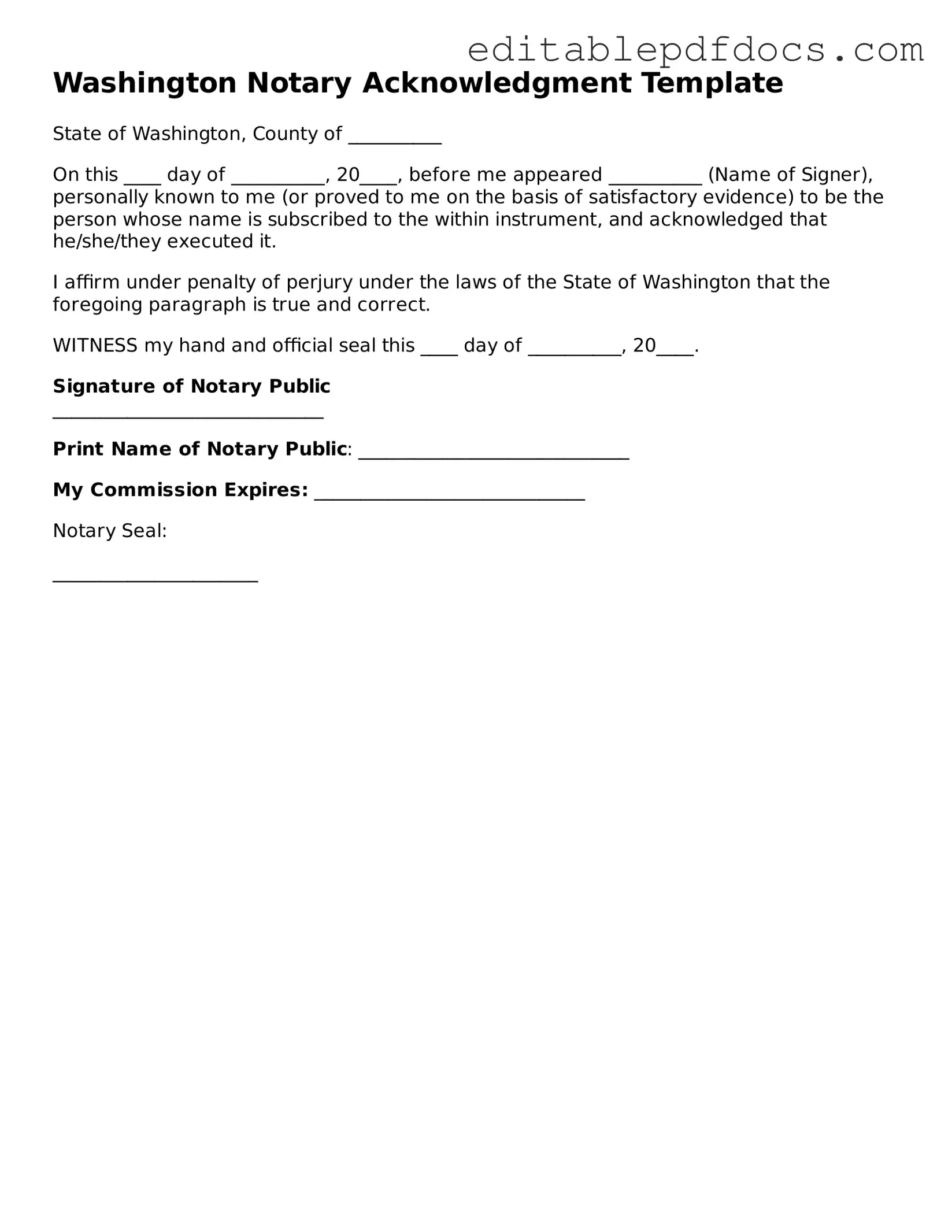Notary Acknowledgement Document for Washington
The Washington Notary Acknowledgment form is a crucial document that serves as proof that a signer has willingly acknowledged their signature in front of a notary public. This form is often used in various legal and financial transactions, ensuring the authenticity of the signature and the identity of the signer. Understanding its purpose and proper usage can streamline your documentation process.
Ready to fill out the form? Click the button below to get started!
Open Editor Now
